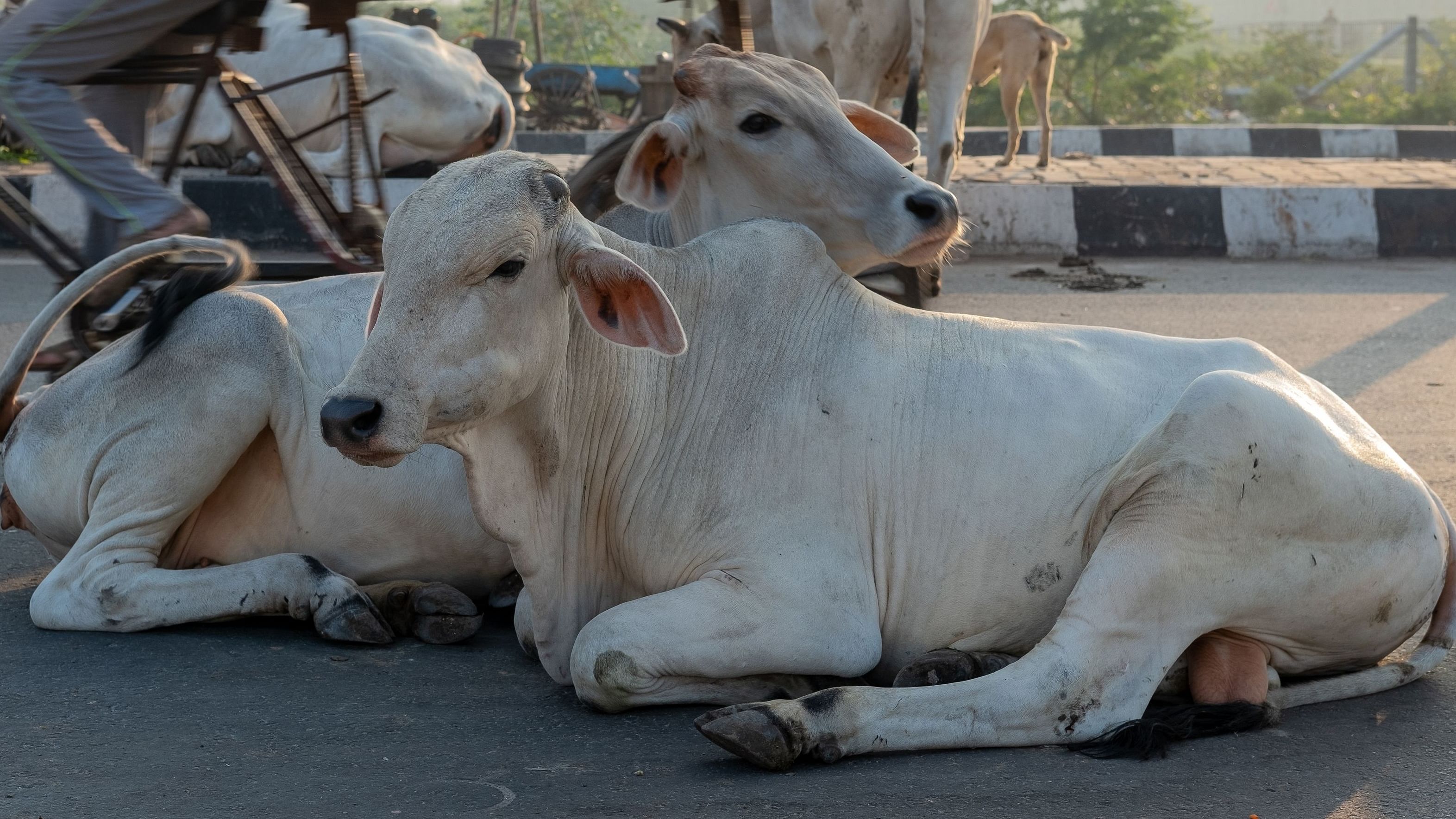
Cows are considered the backbone of rural economy, but face neglect on becoming unproductive, and now a top business school has proposed a facial recognition technology-based development model integrating stray bovines. An Indian Institute of Management Ahmedabad (IIMA) study has come out with a model using facial recognition technology for stray cows to link them with donors to achieve 'Gai Aadharit Unnati (GAU),' or cow-based development.
A working paper published by the country's premier management institute proposes linking stray cows that end up in shelters with donors using an Artificial Intelligence (AI)-based model for a self-sustainable cow-based economy. Authored by IIM-A faculty member Amit Garg and others, the paper suggests that the AI-based model involving facial recognition technology for non-milching stray cows can help donors track their donations in real-time while also caring for them.
The 'GAU model,' including the tech platform, was launched in January this year in Vadodara in Gujarat for live demonstration. Plans are afoot to launch the model in Uttar Pradesh, says the paper titled, 'Gai Aadharit Unnati (GAU): Modernising Cow-based Economy through Application of Advanced Technology.' For live demonstration, an NGO (non-governmental organization) and a panjrapole (cow shed) serving 1,000 cows have been selected.
"The tech has been created and seems promising in connecting the stakeholders. Each cow was also given a name and their profile was created on the tech platform," says the paper. An in-house and proprietary research done by TechMachinery Labs created machine learning models to recognise the face of a cow from a live cow or from its photo. "The face can be recognised for all those cows for which the model is trained with a minimum accuracy level of 92 per cent," as per the paper.
A 'GAU Vision App' is used to recognise the face of cows. The profile of such cows are created on the portal which is used by a donor to make donations, it says. As per the authors, such a platform will offer transparency in disbursement of funds and help a donor choose one or more cows from the database and donate for them on a regular basis, forming a kind of personal link between them.
Gaurav Kedia of the Indian Biogas Association, Pradeep Mishra of the Dr APJ Kalam Technical University, and Nishant Krishna of IT firm TechMachinery Labs are other authors of the paper recently posted on the IIM A website. Under the socio-technical-financial system (STFS) proposed by them, gaushala or panjrapole will be linked with donors so that the former could get money to buy fodders for cows.
Donor money will go to an NGO via the GAU platform, with the voluntary organization providing it with fodder via a company. In exchange, the gaushala provides the company with the equivalent amount of dung on a daily basis at no cost. The company can utilise the dung for biogas generation. “Economical optimisation of stray cow by-products: cow dung derivatives like cakes, compost, briquettes, incense sticks, etc, and cow dung as such along with urine can be sold to biogas/bio fertiliser generation plants for further economic benefits,” said the paper.
The real-world application of the model also demonstrates how a community biogas plant can help sustainable energy transitions for villages and even cities to become self-reliant and lower their dependency on LPG, it said. The circular economic model proposed by the authors will help in "the upliftment of stray cows while also creating employment and boosting the economy through cow dung and urine-based products," the IIM A paper says further. A circular economy is a system designed with the intention that maximum use is extracted from resources and minimum waste is generated for disposal. "In the long run, the proposed model relies more on internal revenue generation and phasing out the donation part to enable the GAU-based sustainability model for an economy," states the paper.
The paper quotes the 20th livestock census as per which there are 50 lakh stray cows in the country, with their number rising, especially after a recent ban on slaughterhouses for cows.